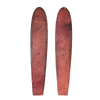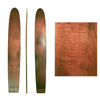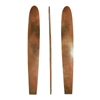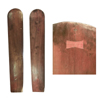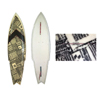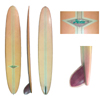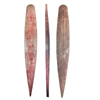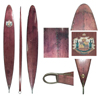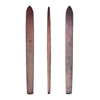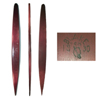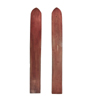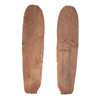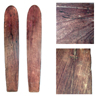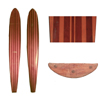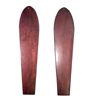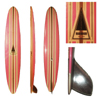Papa he‘e nalu, or surfboards, were invented in Hawai‘i hundreds of years ago and were once the province of royalty. Traditional boards were hewn from a number of different types of woods and ranged in size from a few feet to more than 16 feet. When the first Western explorers saw the skill of Hawaiian surfriders they were amazed at their feats of skill and dexterity while riding waves.
Surfing was disapproved of by Christian missionaries in Hawai‘i and nearly forgotten by the early 20th century. Surfing was brought to the world's attention by Olympic champion, Duke Kahanamoku in the 1920's and 1930's. Since that time technological innovations in materials and design have revolutionized surfing, helping to popularize the sport, and now the surfboard is at the center of beach culture worldwide.
Note:
Only cultural objects with photos available are shown on this page.
To see a full list of all cultural objects of this type, click
here.

